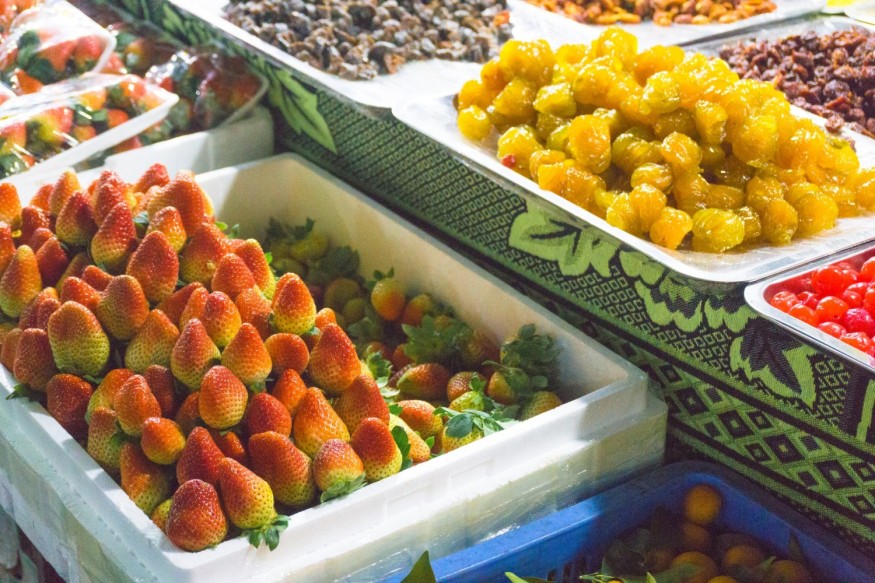
Dry food requires particular storage conditions. Proper packages must comply with certain requirements to guarantee the preservation of food freshness. Dry products are extremely vulnerable to environmental influences, including moisture and sunlight. Thus, the manufacturers of product wrappers should create highly durable covers resistant to external impacts.
Proper dry fruit packaging should possess the following characteristics:
moisture protection since water is the main enemy of dry food;
sustainability since modern packaging trends require treating the Earth and its pollution with care and respect;
food safety by preserving the taste, aroma, and nutritional properties of stored nuts and fruits;
mechanical protection against punctures, cracking, etc.;
logistics suitability by ensuring safe food storage on the road and compact spacing and ergonomics;
visual appeal for marketing purposes to attract more consumers and urge them to select your product among competing ones.
The complex of these properties allows the creation of a durable wrapper for dried food that will look attractive and ensure smooth communication with customers.
Key Points of Importance of Dry Food Proper Packaging
To start the topic, note that dry food has a long shelf life. Dried fruits and nuts can stay edible for years, meaning that packaging should also stay functional over this period and maintain all the required climatic conditions inside the wrapper throughout its shelf life.
Another point is protection against moisture and sunlight. These environmental factors can result in swelling, molding, or going rancid. If the wrapper is damaged (torn or punctured), bacteria can penetrate the pack and start growing. Besides, the aroma, taste, and smell won't be preserved. And food tends to change the texture.
To conclude, the purpose of the modern cover is versatile. It is designed to not only protect fruits and nuts from negative environmental influences and pollutants but also serve as a marketing, promotional and communication tool.
Pros of Using Flexible Wrappers for Dry Nuts and Fruits
Flexible covers come as the most functional and versatile solution for packing dried products. This type of wrapper has many advantages, among which the main ones are:
Enhanced and extremely high moisture barrier. Flexible wrappers usually consist of several layers of films, which allows for improving barrier properties and guarantee moisture resistance. Depending on other requirements, the composition of covers differs.
Excellent sustainability. In most cases, such wrappers are recyclable. If properly disposed of, plastic covers are partially or fully recycled. Thus, by using flexible packages, the industry eliminates the negative footprint on the Earth and its pollution.
One film - multiple formats. Depending on the needed size and shape, a suitable dry fruits packaging pouch is produced. There are pouches, gusset bags, sealed packs, boxes, and other options. Films are highly customizable to the needs of businesses.
Eye-catching packaging designs. When being placed on store shelves, products compete with dozens of other brands. Thus, here, flexible packages should satisfy the demands of customers by being attractive, vivid, and functional. For example, equipping packages with zippers for re-closing will help attract more consumers due to improved wrapper functionality.
The Green Aspect of Wrappers
The production technology of flexible film packaging makes it eco-friendly. Due to the used materials and combinations of layers, processing plants can recycle most types of wrappers and reduce the amount of waste.
Another type of cover is biodegradable, which means that covers can decompose when being thrown into a landfill. Gradually, they decompose into simple components that are non-toxic and non-harmful to the soil and the environment.
TOP Materials for Dried Nuts and Fruits Packages
A BOPP film comes as the best packing material for dry fruits. It is suitable for subsequent lamination, metallization, and printing. Advantages of all types of BOPP include high strength, flexibility, and good optical properties.
The film is widely used together with other layers. During the manufacturing process, layers of copolymers can be applied to the film on one or both sides, which do not affect the optical and mechanical properties of the substrate. The following structures are the most popular:
a three-layer film BOPP+PP+BOPP. It comes as the most popular composition for packages. Oriented transparent/pearl-white/matte PP film is applied as an adhesive layer. It features high transparency and high barrier properties to water condensate.
a three-layer laminate based on BOPP+PET+BOPP is offered. PET has higher barrier characteristics, which allows for extending the shelf life.
The choice of a suitable option depends on the type of product, shelf life, and budget. Take time to consider multiple solutions and select the best one for your case or consult skilled specialists.
To summarize, note that dry food requires strict compliance with packaging and storage conditions. Thus, covers for such products must be highly functional. The process of selecting an appropriate package for dried food is time- and effort-consuming since producers should foresee multiple factors and find the wrapper that will preserve all the mentioned features. BOPP-based films come as the best dry fruits packing materials. They feature high durability and resistance to environmental impacts and come in a wide variety of shapes.












